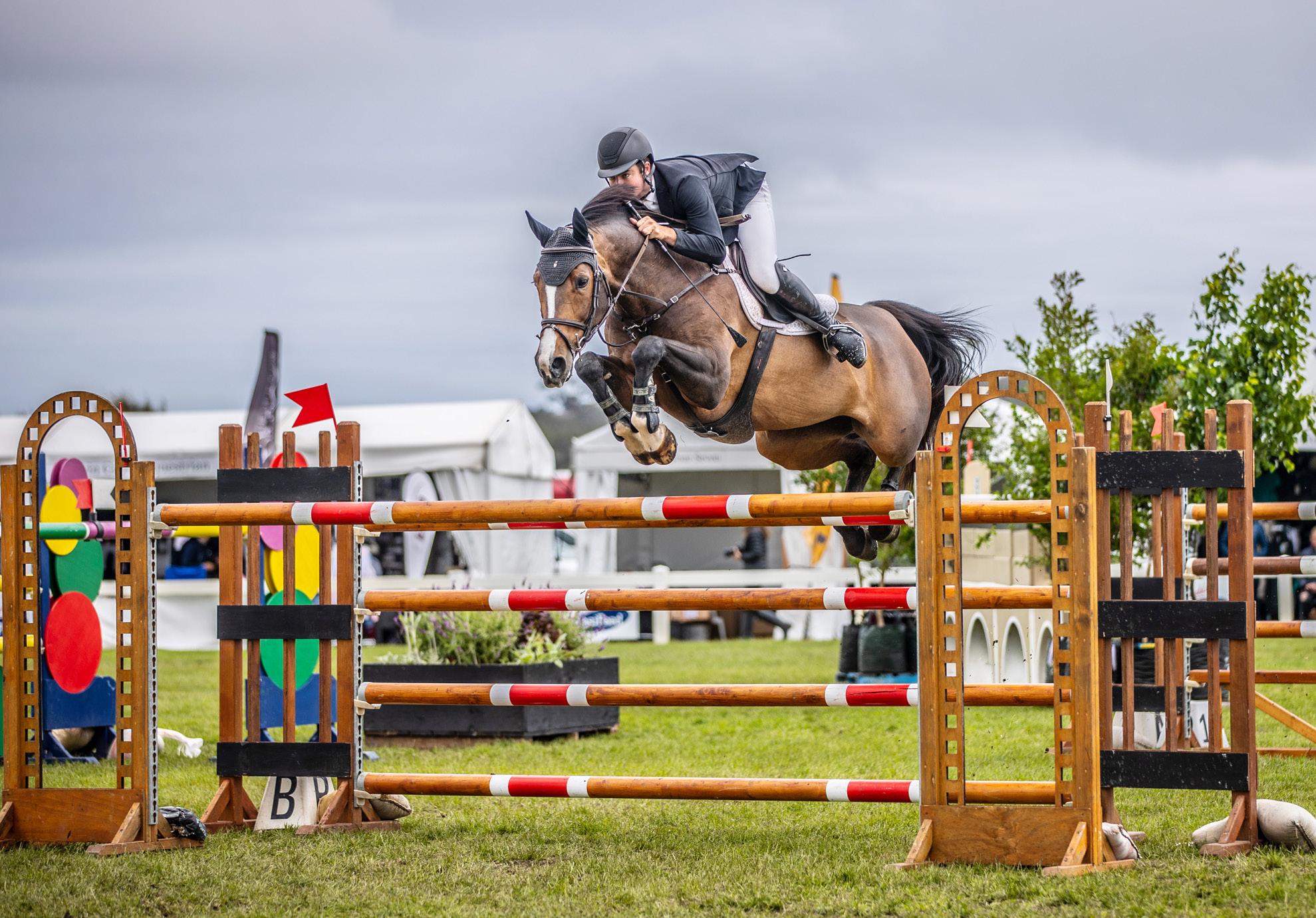
9 minute read
Spotlight on Tom McDermott
SPOTLIGHT
On a roll
At 17, Tom McDermott was the youngest show jumper in the world to win a World Cup, and as RACHEL ROAN discovered, the accolades keep rolling in.
For Tom McDermott, riding horses is in his blood. In their early years, both his parents were talented riders on the show jumping circuit. Tom tells me his mother Jennie had competed up to 1.3m, later grooming for his father Greg while he competed in the World Cup League, the World Cup final, and with the Australian team at the 1988 Seoul Olympics. But after the tragic loss of Greg’s Olympic horse in 1990, the couple decided to pull the pin and settle down in Wagga Wagga, where Tom was born and raised. Greg turned his hand to racehorses, setting up a stable to break and train. “They knew what the horse world entailed, so they never forced it onto me,” Tom recalls, “although they had a Shetland pony for my older sister and I, we weren’t super interested as young kids.”
But by age nine Tom had caught the bug. “Growing up, people would ask me what my hobby was outside of riding, and I wouldn’t have an answer,” he laughs. “I used to tell them this is my hobby. This is what I love, it’s my passion. This is what I want to do. Horses were it.”
Like many horsey kids Tom attended Pony Club, getting serious about show jumping by the time he was twelve. His first big show was the Australian Show Jumping Championships in Sale, Victoria, where he won the Junior Australian title and still holds the record as the youngest ever to win that event. “After that it really kicked off,” he says.
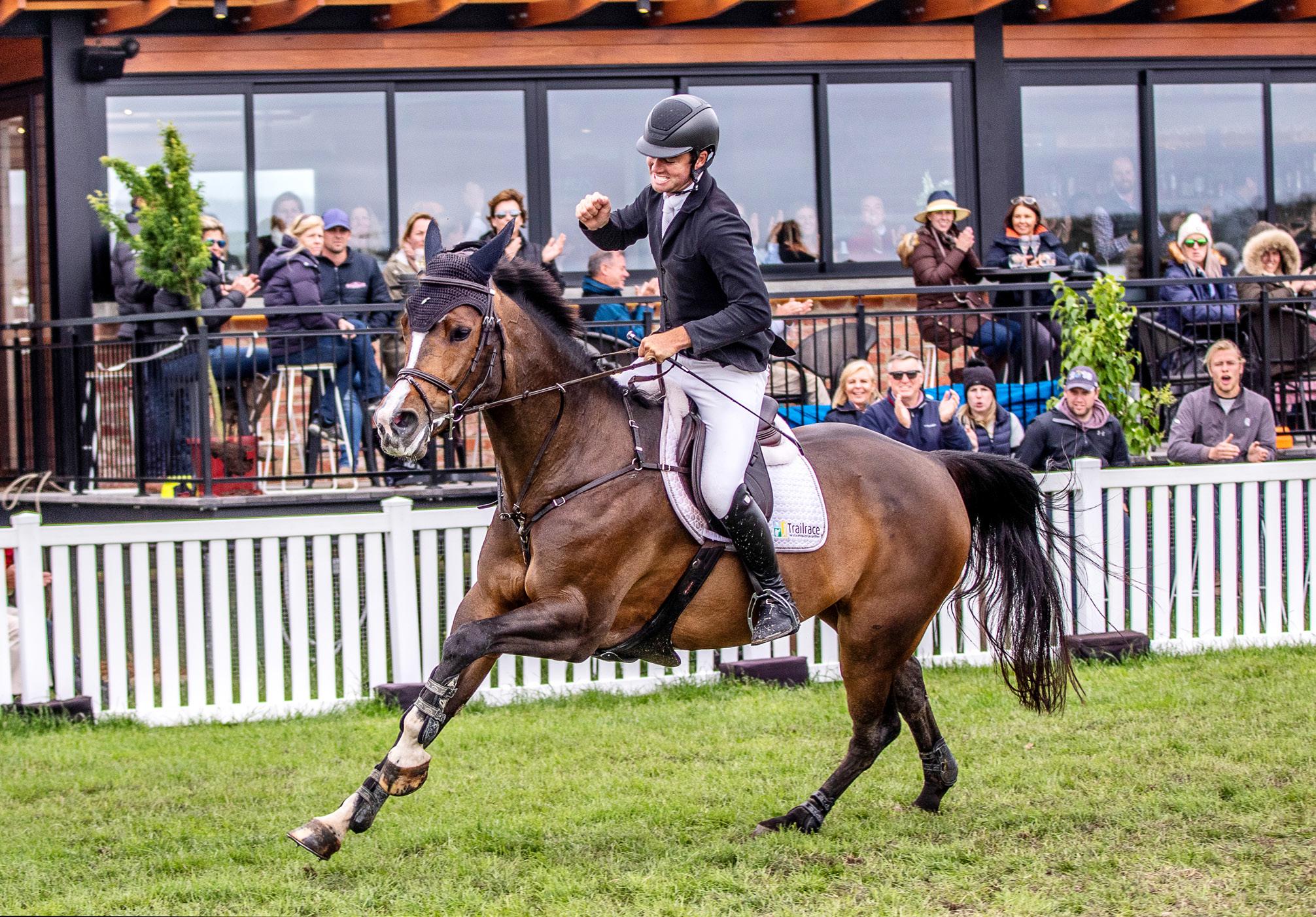
He attributes his success in the years that followed to his parent’s experience in choosing the right horses for him. “Mum and Dad had a very good eye for a horse,” he tells me. “You would always find a reliable old Thoroughbred hurtling around A Grade at the local Ag Shows. My parents would spot those and say, ‘we want that one for our son’. The horses were never anything flash, their technique wasn’t anything special and they weren’t easy, but they were always the right horse for me.” And it’s to this string of Thoroughbreds that Tom credits his early successes. It started with a gelding called Zaydan; the same horse he won the Junior Title on. “We won nearly every Junior class we went in – he was unreal for me. He’s responsible for making me into the rider I am now,” Tom reminisces. To this day, he is always happy to buy an old schoolmaster: “You know they will come with their issues, but they’re worth it for what they can offer you.”
Despite attending a school that accommodated his competition commitments, with a riding career ahead of him, he convinced his mum to let him leave part way through Year 11. But there was one condition: he had to do the mowing and gardening every week. He laughs: “That’s how I ended up mowing on Fridays!”

FACING PAGE: Elegance de la Charmille is not the most conventional horse to ride, but has the heart of a lion. ABOVE: Tom and Elegance de la Charmille were Senior Champions at the 2019 Australian Championships. LEFT: Warraleigh Park Cortez and Tom at the 2021 Sydney Royal. All images by Australian Jumping
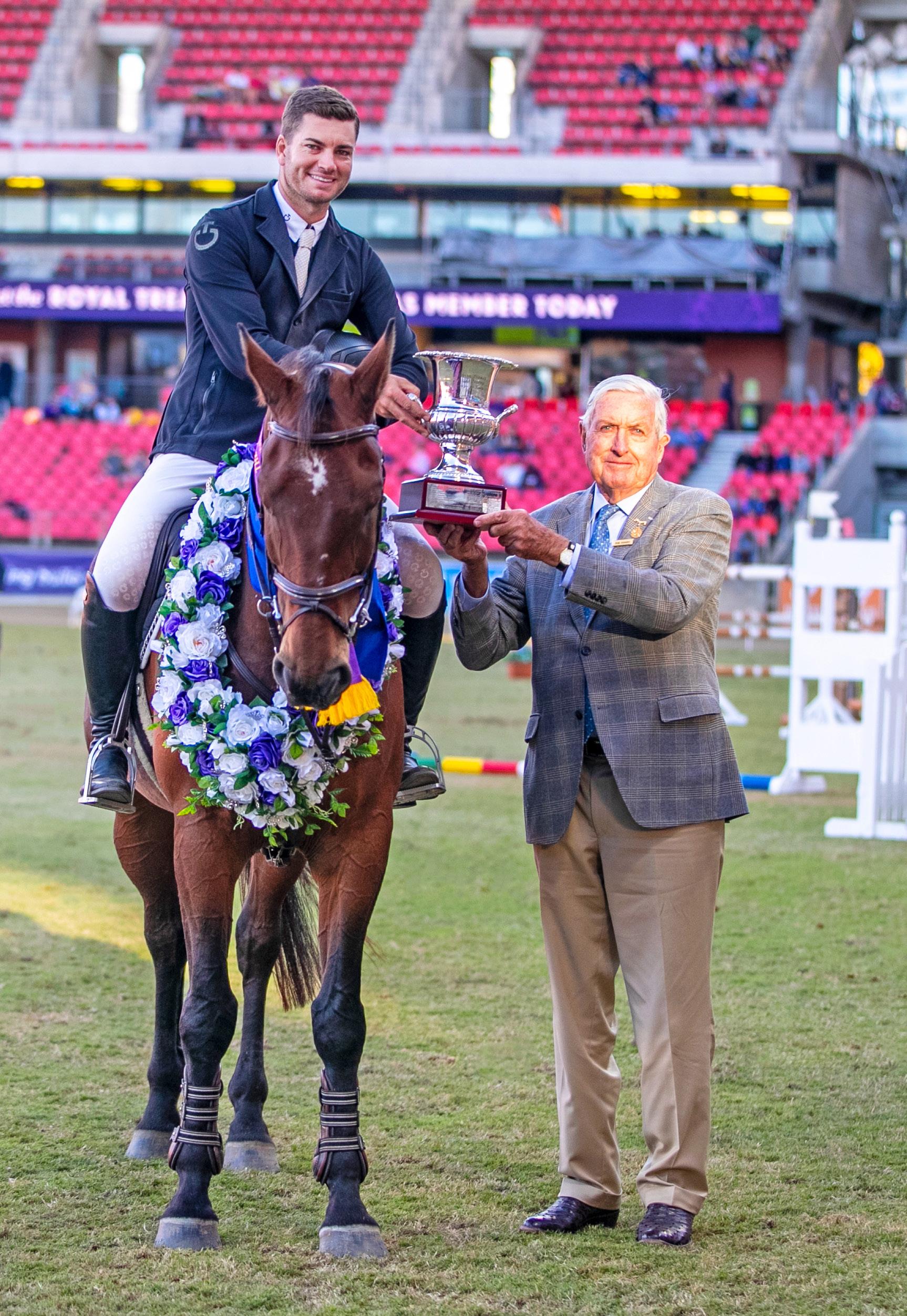
Tom came second in the 2022 Sydney Royal Grand Prix with Warraleigh Park Cortez.
By then, Tom was already coaching a handful of riders - all older than him - as well as training horses for other people and keeping his team of six competition horses in work. In addition, he helped retrain the unsuccessful racehorses that came through his dad’s stables. “In those days, off the track Thoroughbreds were a huge thing. I used to educate and turn over a lot of them and would always have up to eight in work, prepping them to sell.” With a full schedule of horses to work as well as his own team, Tom certainly had his hands full. But he thrived: “I’m either very committed to what I do, or I’m all out.” Competing is still what Tom loves most about riding. Growing up, he lived for competitions and found winters particularly tough when the shows shut down. “If there were no shows on, I would go crazy.” Part of show jumping’s appeal has always been its clarity, there’s nothing subjective about it: “You either get a rail down or you jump clean,” he explains. “You can be the best in the world one day and the next day you can have a disaster and be back where you started. It’s a very grounding sport.” these days he takes the losses with a grain of salt and looks for the lessons instead. “At the end of the day, it’s just a pole on the ground. As long as you do well and your horse does well that’s all you can aim for. Tomorrow is another day. There will always be another round to have another shot.”
Like many riders, Tom has had his fair share of setbacks. He acknowledges the long days, long hours, and the blood, sweat and tears necessary for success. But that hasn’t deterred him. “Getting a rail down is always disheartening but being passionate about it helps you strive to be better every day.”
Learning early to ride a variety of horses, Tom says he still aims to gain something from each ride. “I used to love little horses that were super careful, very hot, maybe a little difficult to ride. But times are changing, you need to have a bigger horse with all the scope in the world, because when you get to the top end of the sport, it’s absolutely huge.”
With good Thoroughbreds now either hard to come by or too expensive, Tom’s focus has shifted to Warmbloods. “I’ve had to change with the times. My ideal horse right now would be 17hh with endless scope and a little bit of blood.” He recalls that throughout his youth, many Thoroughbreds were still competing in World Cup and 4* events. “Maybe they breed them differently these days,” he ponders.
Now 28 years old, Tom runs his own racehorse business with his partner, who trains Thoroughbreds. “We have a lot of racehorse connections, but even with that, it’s still hard to find a Thoroughbred that will make the top grade.”
Despite this, he believes they still have their place. “There are millions of Thoroughbreds out there that will still do a good job at Interschools, Pony Club, or trail riding, but it’s difficult to find one that will cut it for the top grades. The top end of the sport is as tough as it’s ever been, the jumps are as big as they’ve
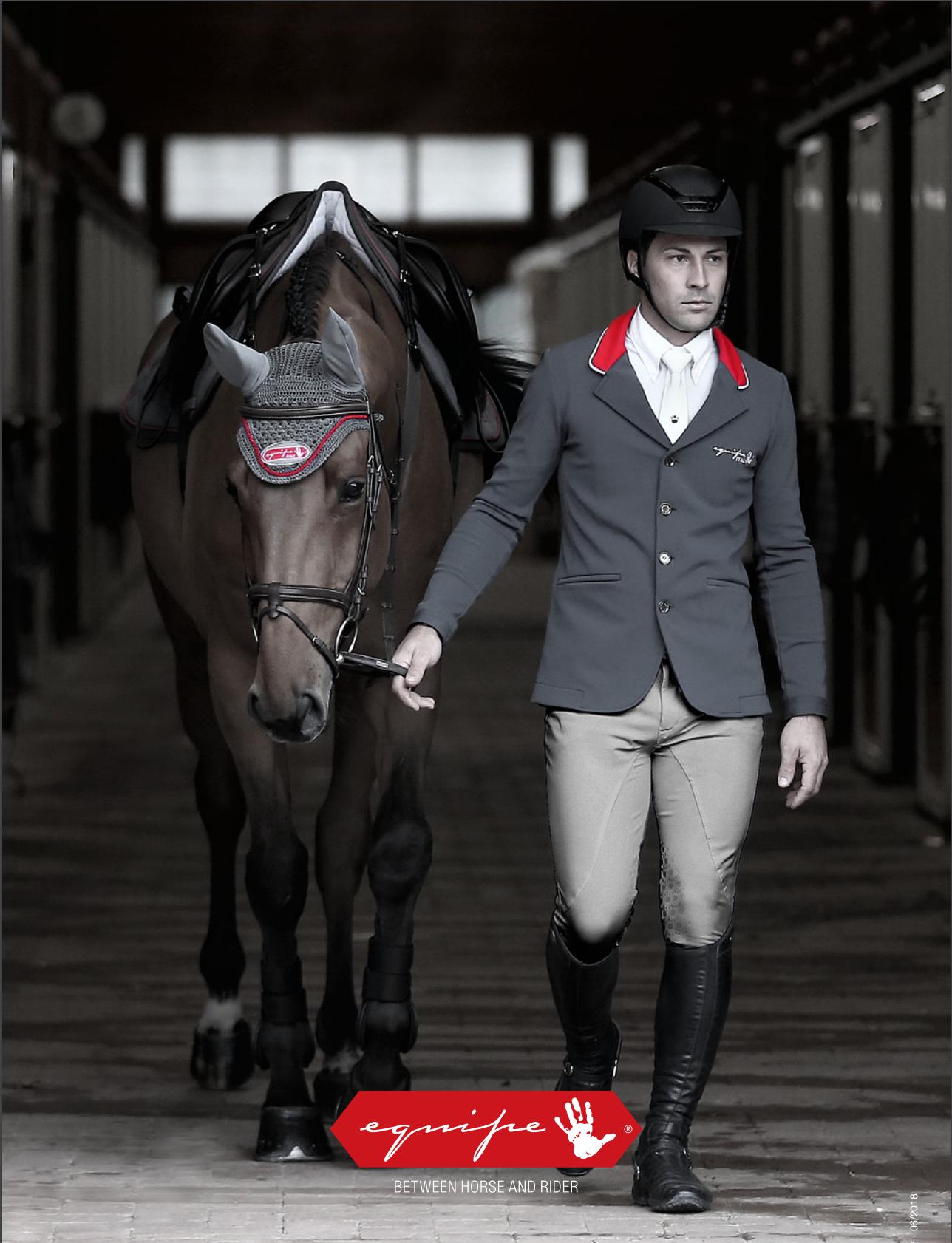

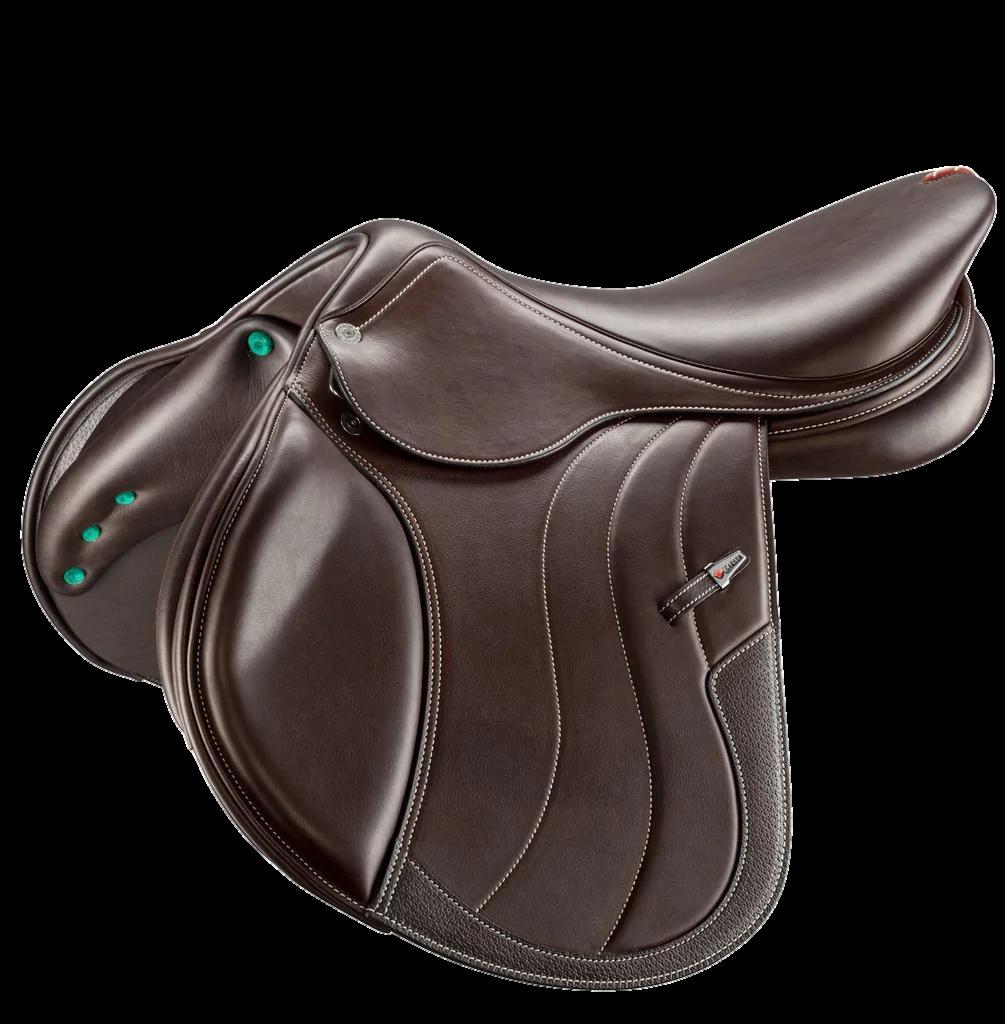

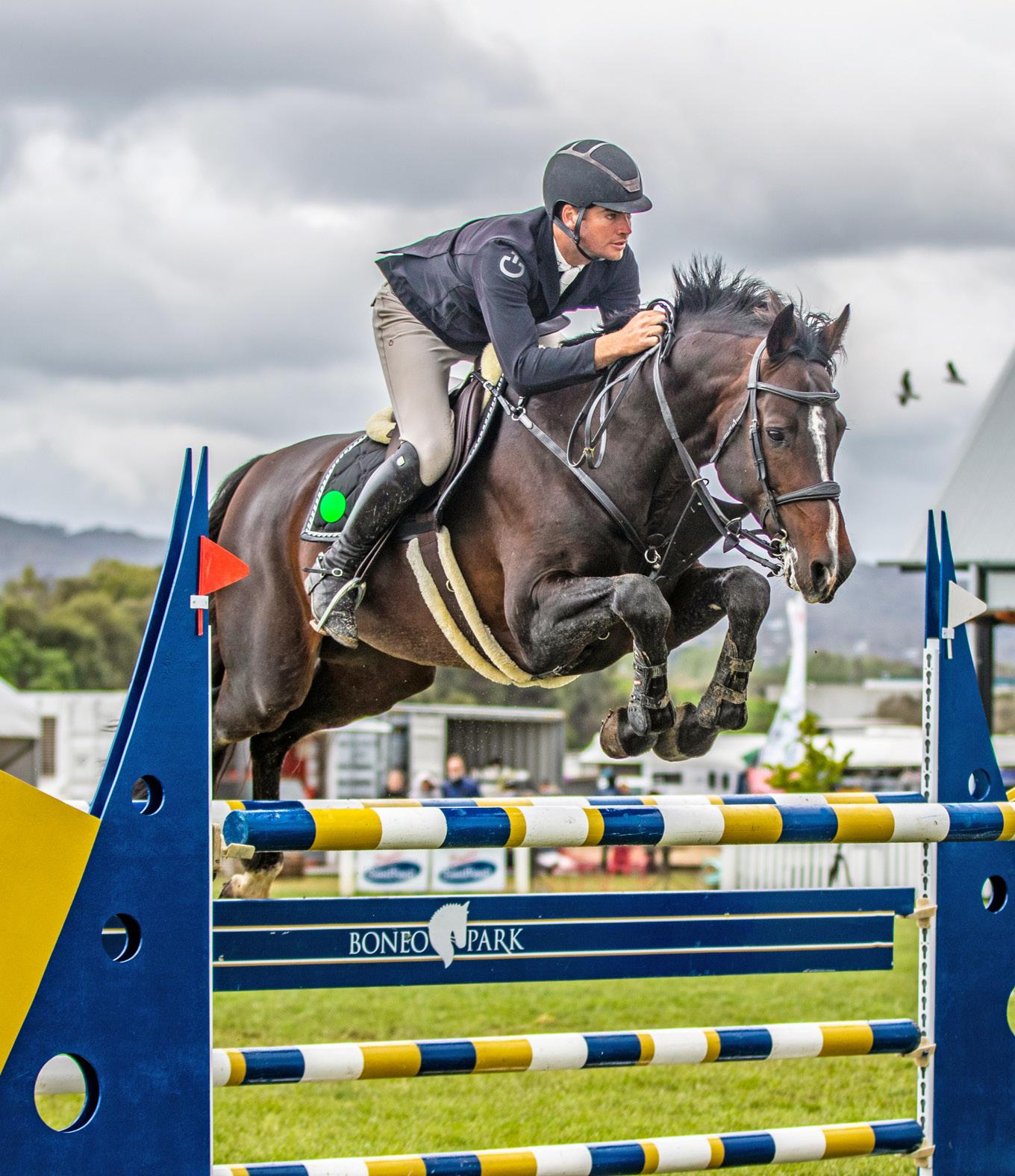
Tom and his stallion Cachassini II at the 2019 Australian Championships.
ever been. It’s really become a purposebred sport,” he explains. And while a handful of purebred Thoroughbreds are still competing, Warmbloods have become the horse of choice.
Alongside his racing business, Tom breeds a few foals each year each year but considers this a hobby. When it comes to finding the right competition horse, his advice is to sit on the horse, pop it over a pole, and get a feel for whether you click. “When buying a horse, you need to take a gamble if you’re able to, because you never know what will happen. The breeding game is such a long process and there are no guarantees. You could have the best bloodlines but still breed a foal with no scope. Some of the freakiest, best horses in the world have not been the best bred, but they’re the ones with the biggest hearts,” he adds. One of his current stand-outs is Elegance de la Charmille, a 16.1hh mare who Tom says is not the most conventional horse to ride, but has the heart of a lion: “I have all the trust in the world for her. I feel like I could do anything with her and she’ll fight for me.” Charmille won the Australian Show Jumping Championships a few years ago, a handful of World Cup classes, and some of the biggest Grand Prix classes in Australia.
Asked about other horses pivotal to his career, Tom rattles off a long list. “CP Rolex, Romantic Dream, SL Limerick – they’ve all won World Cups, Grand Prix, or Junior or Senior titles for me. My most recent would be Charmille, Cortez, and Alfa Activity.” The list goes on. “I’ve been so fortunate to have sat on so many good horses and done well on them,” he says. I ask Tom what’s made him stick with the sport all these years: “I love the adrenaline. I feel like I ride better under pressure. If it’s a big World Cup or Grand Prix class, I thrive on being last out and having to do a quick, clean round. I ride better and my current horses are better with a bit of pressure.”
Tom’s list of achievements is long, with titles that include Junior Australian, Young Riders Australian, Senior Australian, and, of course, there’s that record as the world’s youngest winner of a World Cup Qualifier. But he’s humble about these results, acknowledging the team of people that have helped him get there. “It definitely takes more than one person to get you to that ring. It’s about everyone who helps you, supports you, looks after the horses.”
Tom still has big plans and is grateful for his current team. “I have four to five Grand
Prix horses, so I can pick and choose the World Cup and Grand Prix events we compete in, and I have some nice young horses coming through.”
Recently returned from America, Tom plans to chase World Cup points this year “for a bit of fun”, and hopes to return to America with a team of young horses next year. The World Equestrian Games and Olympics are also in his sights but he believes reaching these will happen when the time is right. “What will be, will be. It all has to fall into place at the right time with the right horse,” he says. He’s also aware of the financial costs involved with taking horses overseas to qualify, but recognises that that comes down to the level of risk you’re willing to take.
For now, Tom would first like to experience the qualifying process, so he’s familiar with it before going all in. “In the meantime, I’ll just have some fun. Show jumping is in my blood and that’s what I love the most.”










